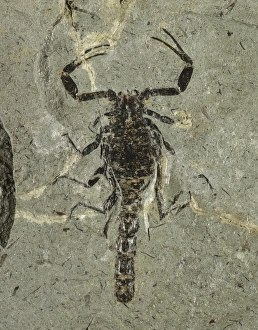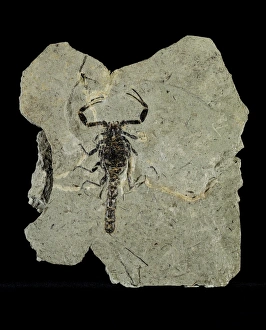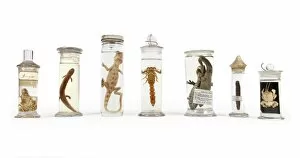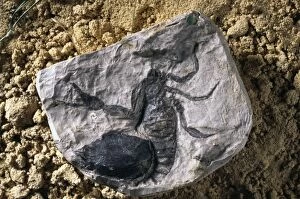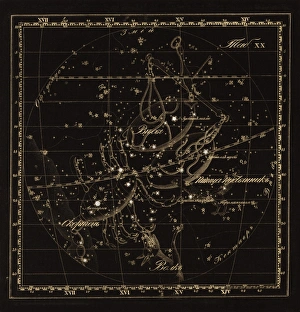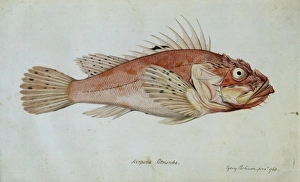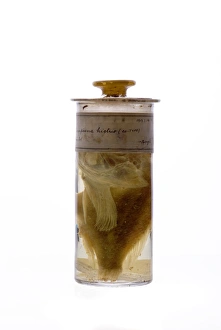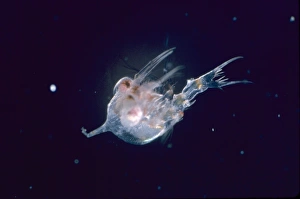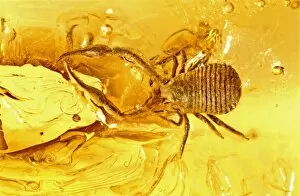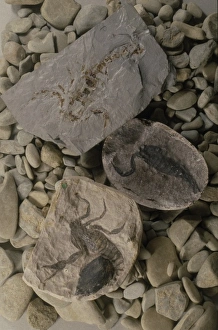Scorpion Collection (page 16)
Scorpions are a type of arachnid that are found all over the world
1,109 items
All Professionally Made to Order for Quick Shipping
-
Scorpion Collection
Scorpions are a type of arachnid that are found all over the world. They have eight legs, two large pincers, and a tail with a venomous stinger at the end. Scorpions range in size from about 1/2 inch to 8 inches long, and are nocturnal and feed on insects, spiders, and other small animals. Scorpions have an exoskeleton made of chitin which helps protect them from predators and the environment. Some species can even survive extreme temperatures ranging from -100F to 140F. Scorpions also have special sensory organs called pedipalps which help them detect vibrations in their environment like prey or predators and can live up to 25 years in captivity but typically only live for 2-3 years in the wild due to predation or environmental factors like drought or flooding.
+
Our beautiful pictures are available as Framed Prints, Photos, Wall Art and Photo Gifts
The Scorpion collection from Media Storehouse is a stunning assortment of high-quality wall art and framed prints featuring some of the most fascinating crustaceans in the world. These creatures are known for their unique appearance, with their elongated bodies and sharp pincers that make them both beautiful and dangerous. Our collection includes a wide range of images showcasing different species of scorpions, from the common yellow scorpion to the giant emperor scorpion. Each print captures these animals in incredible detail, highlighting their intricate features and vibrant colors. Whether you're a nature lover or simply looking for an eye-catching piece to decorate your home or office, the Scorpion collection has something for everyone. With its exceptional quality and attention to detail, our collection is sure to impress anyone who sees it.
+
What are Scorpion (Crustaceans Animals) art prints?
Scorpion art prints refer to a collection of high-quality images featuring scorpions, which are crustacean animals that belong to the arachnid family. These prints showcase the unique physical characteristics and behavior of these fascinating creatures, including their sharp pincers, venomous stingers, and nocturnal hunting habits. Scorpion art prints can be used for various purposes such as home decor, educational materials or scientific research. They are available in different sizes and formats like canvas or framed prints suitable for any interior design style. The images are captured by professional photographers who have an eye for detail and composition. These art prints offer a great way to appreciate nature's diversity while adding visual interest to your living space or workspace. Whether you're a lover of wildlife photography or simply looking for something unique to decorate your walls with, Scorpion art prints from Media Storehouse provide an excellent option that is sure to impress anyone who sees them.
+
What Scorpion (Crustaceans Animals) art prints can I buy from Media Storehouse?
We offer a wide range of Scorpion art prints that are perfect for animal lovers and enthusiasts. You can choose from a variety of stunning images featuring different species of Scorpions, captured in their natural habitats or in close-up shots that highlight their unique features. Some popular options include macro photography prints showcasing the intricate details of the Scorpion's body, as well as artistic interpretations that capture the essence of these fascinating creatures. Whether you prefer black and white or full-color prints, there is something to suit every taste and style. All our Scorpion art prints are printed on high-quality paper using state-of-the-art printing technology, ensuring vibrant colors and sharp details that will stand the test of time. With so many beautiful options to choose from, you're sure to find the perfect addition to your home or office decor collection at Media Storehouse.
+
How do I buy Scorpion (Crustaceans Animals) art prints?
To purchase Scorpion art prints from Media Storehouse, you can browse our extensive collection of artwork featuring these fascinating creatures. Once you have found a print that catches your eye, simply add it to your cart and proceed to checkout. You will be prompted to enter your shipping and payment information before finalizing the order. We offer a variety of sizes and framing options for their prints, so be sure to select the one that best suits your needs. Whether you are looking for a small print to display on a desk or shelf or a larger piece to hang on your wall, there is something for everyone in their collection. With high-quality printing techniques and archival materials used in every print, you can rest assured that your Scorpion art print will last for years to come.
+
How much do Scorpion (Crustaceans Animals) art prints cost?
The cost of Scorpion art prints can vary depending on a number of factors, such as the size and quality of the print, the artist who created it, and where you purchase it from. We offer a wide selection of Scorpion art prints that are available in various sizes and styles to suit your preferences. These prints feature high-quality images that capture the beauty and detail of these fascinating creatures, making them perfect for anyone who loves marine life or wants to add some unique decor to their home or office. While prices may vary depending on the specific print you choose, Media Storehouse is committed to offering affordable options that allow everyone to enjoy beautiful artwork without breaking the bank. Whether you're looking for a small print or a large canvas piece, there's sure to be something in our collection that catches your eye.
+
How will my Scorpion (Crustaceans Animals) art prints be delivered to me?
Your Scorpion art prints will be delivered to you with the utmost care and attention to detail. We take pride in ensuring that your artwork arrives in pristine condition, ready for display or framing. We use high-quality packaging materials to protect your prints during transit, including sturdy cardboard tubes and protective sleeves. Our team of experienced professionals carefully handle each print to ensure that it is not damaged during shipping. Once your order has been processed and shipped, you will receive a tracking number so that you can monitor its progress as it makes its way to you. If there are any issues with delivery or if you have any questions about your order, our customer service team is always available to assist you. We believe that art should be accessible and enjoyable for everyone. That's why we strive to make the process of ordering and receiving your Scorpion art prints as easy and hassle-free as possible.

